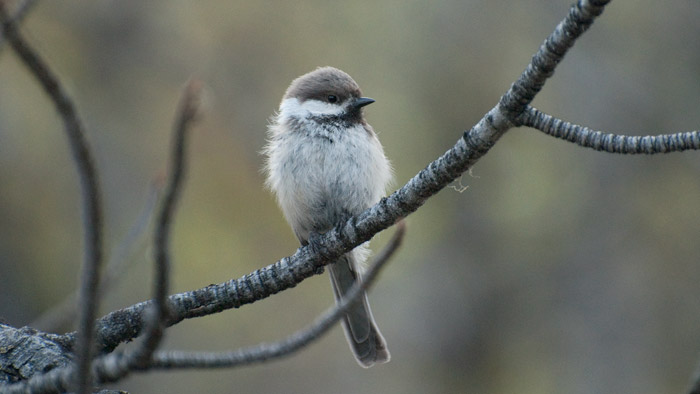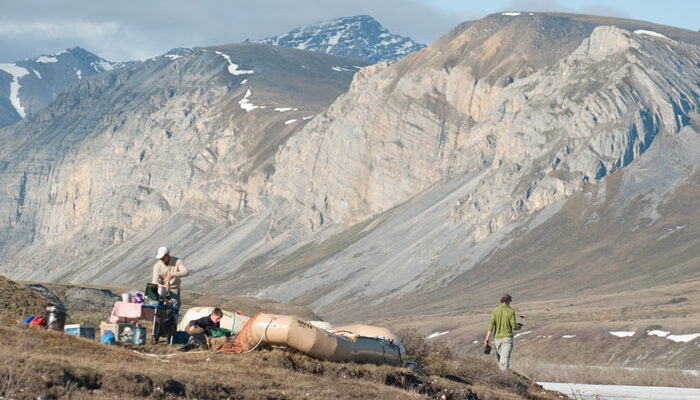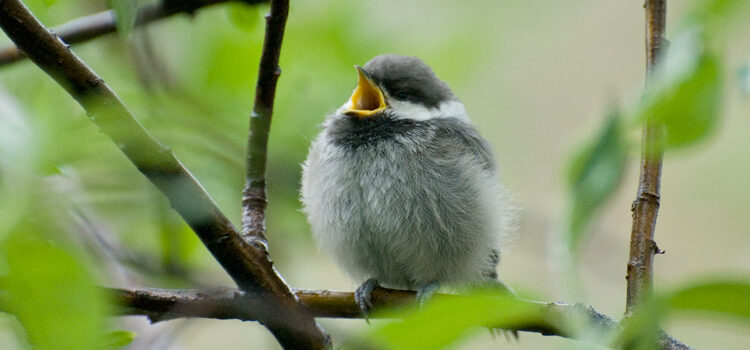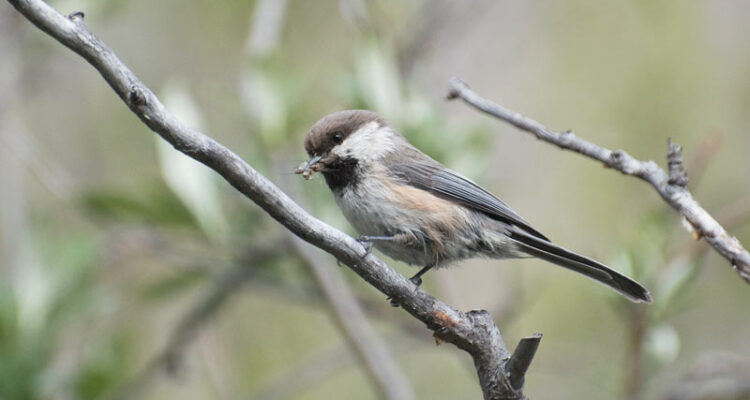We're excited to partner with our friends at Audubon Alaska to offer this eight-day adventure in…

2014 Rafting for Chickadees
Scott and Aaron just returned from an eight-day search for Gray-headed Chickadees on the north side of the Brooks Range, Alaska’s northernmost mountain range. While most join this trip for the chance to search for North America’s most elusive breeding bird, nearly everyone leaves the wilderness with a sense of accomplishment stemming from more than just finding a new bird. This is a true wilderness birding adventure in one of America’s last great wilderness areas.
The details of this year’s trip…
Due to more snow in the mountains than we typically find on this trip, this year we enjoyed higher than normal water levels which made for good traveling and less dragging of boats through shallow sections of the river. The weather was generally good throughout with the exception of a significant storm on Day 5 and 6 which sent us heavy rains and upriver winds. Temperatures were cooler than average with only one day that could be described as “hot.” Several nights the temperature dipped below freezing.
We found only one pair of chickadees this year (which is typical), and we were fortunate to have the time to spend three hours on a mostly sunny day to watch this pair bring insects to their two large chicks. These chicks were on the verge of fledging and luckily we found them before they left the nest. The birds can be very difficult to find once they’ve fledged into the dense willows.
In addition to the chickadees, we found three new species for the trip’s cumulative list (Rusty Blackbird, Solitary Sandpiper, and Surf Scoter), and our species total of 57 bested the previous high by one species. A leader only fly-over Eastern Yellow Wagtail, would have further upped the tally. The most notable non-chickadee species on the trip were a displaying Solitary Sandpiper and a Rusty Blackbird. Both of these species range north to the extent of the boreal forest on the south side of the Brooks Range. We’ve not had either species on any of our previous trips on the north side of the Brooks.
The highlights of our wildlife encounters were a long study of a grizzly bear as it fed on the tundra across the river from our camp. We watched it for over an hour as it munched its way along. We also found four different wolves along the river, including a beautiful brown wolf that Tom and Marian watch for 10 minutes near camp on the first morning. Midway through the trip the first raft spooked a wolf off a freshly killed Dall sheep along the river bank. Both rafts were able to pull off to a gravel bar and watch this gray wolf reluctantly leave its prize. No doubt it returned as soon as we left. A few days later we found a white wolf on a tundra slope above the river and on the second to last day, a black wolf near the take out.
On most trips, we also enjoy an interesting array of butterflies on the tundra, but this year due to the cool and wet conditions we saw fewer species than is typical. Butterflies we found included: Old World Swallowtail, Morning Cloak, Silvery Blue, Western Tailed-Blue, Arctic White, Western White, Northern Marble, Labrador Sulphur, Disa Alpine, and two species of fritillary that we’re still working on identifying.


